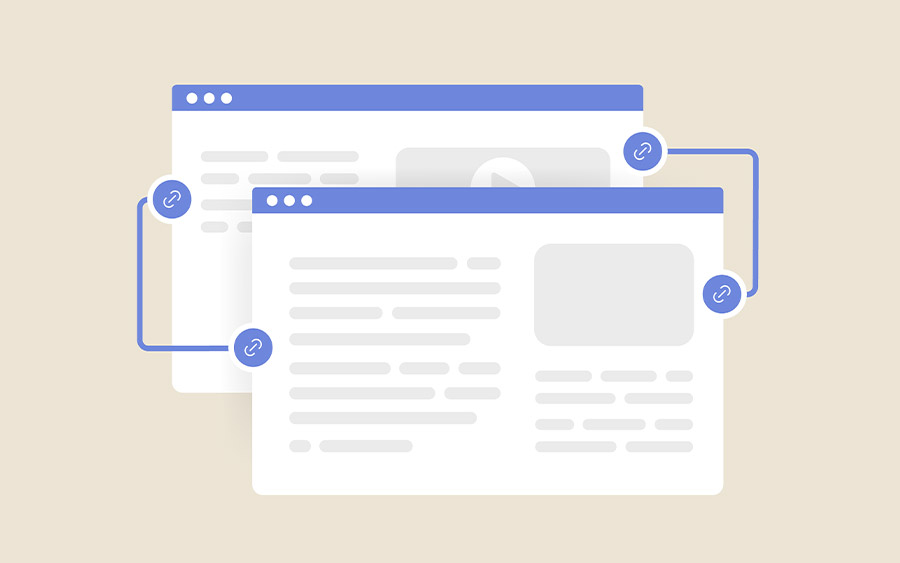What is first link priority and how does it affect your SEO ranking?
In the world of Search Engine Optimization (SEO), every detail counts to improve your website's visibility. One often overlooked but essential strategy is internal linking.

Among the various rules governing their influence, first link priority occupies a special place. This rule can have a significant impact on the ranking of your pages in search results.
In this article, we’ll explore this concept, how it works, and how you can use it to your advantage to optimize your internal linking strategy and improve your SEO.
Links and their importance in SEO
Links (internal and external) are one of the pillars of SEO.
When it comes to SEO, links serve a dual purpose:
- structure the information on your site;
- and transfer authority from one page to another.
Each link is a pathway for Google to understand your site’s architecture, and each link is also a page recommendation to Google, which can influence its ranking in search results.
But did you know that there’s a special concept behind internal links, called priority link? Understanding this mechanism can help you improve your site’s SEO.
What is first link priority?
Imagine that Google is a fastidious teacher at an SEO conference. When he sees several students (links) raise their hands in response, he’ll listen first to the one who raised his hand first. Yes, he’s like that, he doesn’t like to be bothered by those who are too enthusiastic (or by those with too many links).
In other words, if you have several internal links pointing to the same page, Google will consider the first link and its anchor text to be the most important for that page’s ranking.
Does this really affect SEO rankings?
The answer is not completely clear-cut, but it is widely accepted that first link priority has an influence, although it is limited by other criteria such as :
- content quality,
- backlinks,
- or user experience.
Some SEO experts claim that this rule has a direct impact, especially when it comes to optimizing strategic pages on your site.
How can you optimize your SEO strategy to take advantage of link priority?
Here are a few practical tips to maximize the impact of this rule in your SEO strategy.
Prioritize your main pages (MVP)
First of all, identify the most important pages on your site: the pages you absolutely want to rank well.
These are the pages that generate the most traffic, conversions or leads. These are your MVP(Most Valuable Pages).
Choose relevant internal links
Not all internal links are created equal.
Make sure that the links pointing to your main pages come from relevant pages related to the same subject. This allows Google to better understand the thematic link between your pages, which boosts the authority of the target page.
Place your links strategically within the content
The position of the link plays a crucial role.
The higher up the page a link is located, the more importance Google attaches to it. Placing your internal links in the main content, rather than in footers or menus, is one way of maximizing their impact.
Optimize your anchor text
Anchor text is a key factor in first link priority. Make sure it includes relevant keywords related to the target page, without overdoing it.
Think user experience
A good internal linking strategy isn’t just about SEO optimization. User experience is equally important.
If a link is poorly placed, if it interferes with the flow of navigation or if it annoys the surfer, it will lose its value.
In short: exploit first-link priority in your SEO
Understanding the priority of the first link can give your key pages a boost and help you stand out in search results.
Here’s what you need to know!
- Prioritize strategic pages in your internal links.
- Choose relevant links that make sense to the user.
- Position them well in the content, at the top if possible.
- Optimize anchor text to include natural keywords.
Never lose sight of theuser experience: smooth navigation is essential.
So you see, for a successful SEO strategy, first link priority is like your SEO joker: if you know how to use it, you get a head start, without having to be caught up by secondary links that haven’t seen the first page of the year.
What’s more, if you want to maximize the impact of your internal links and significantly improve your SEO, it’s essential to understand the subtleties of these strategies.
At AntheDesign, our team of SEO experts puts its know-how at your disposal to help you optimize your website. We analyze your current practices, identify internal link opportunities to prioritize, and propose customized solutions to help you achieve your visibility and performance objectives.
Don’t hesitate to contact us for a full audit of your SEO strategy, or for personalized support that will make all the difference in your rankings.
Together, we’ll boost your site’s visibility and ensure its long-term success.